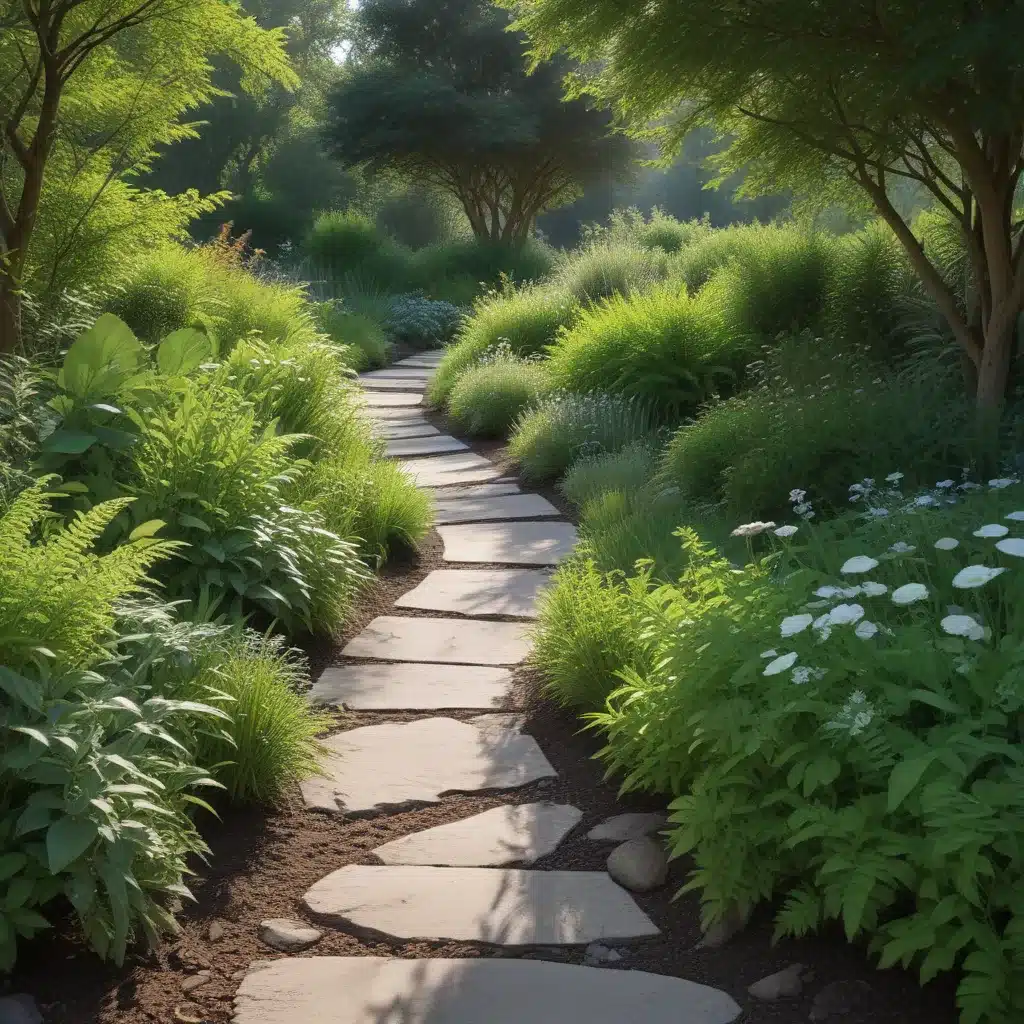
Adaptive Artistry: Designing Flexible Landscapes that Evolve with Changing Conditions
Landscape Design
In an era of rapid environmental flux, the design of resilient, adaptable landscapes has become paramount. At TriCounty Tree Care, we champion a holistic, strategic approach to landscape architecture that embraces the inherent dynamism of natural systems. By blending adaptive design principles, artistic techniques, and sustainable practices, we can create landscapes that not only thrive under changing conditions, but also enhance the ecological and experiential value of outdoor spaces.
Adaptive Design Principles
The cornerstone of our approach is flexibility and resilience. Rather than imposing rigid, static forms, we design landscapes that can flexibly respond to environmental shifts, whether gradual or abrupt. Drawing inspiration from the self-organizing, dynamic ecosystems observed in nature, we strategically arrange landscape elements to foster adaptive capacity.
This might involve incorporating a diverse palette of plant species, each with unique adaptive traits suited to a range of environmental conditions. Or it could mean designing multi-functional landscape matrices that can adjust their configuration and performance over time. The goal is to create a propagating organization – a living, breathing system that can renew and reinvent itself in the face of change.
Landscape Evolution
Adapting to changing environmental conditions is a key tenet of our design approach. We analyze site-specific factors, such as projected climate patterns, hydrological regimes, and disturbance regimes, and then devise responsive landscape elements capable of evolving in concert with these shifts.
For instance, we might specify drought-tolerant plant species that can thrive during periods of water scarcity, or design bioswales and permeable surfaces that can flexibly manage fluctuating stormwater flows. By anticipating and accommodating change, we imbue landscapes with a resilience that transcends traditional static design.
Landscape Artistry
While adaptive capacity is essential, we also believe that landscape design should elevate the human experience through thoughtful aesthetic considerations. Our team of designers, ecologists, and horticulturists collaborates to achieve a harmonious balance between visual harmony and experiential design.
Aesthetic Considerations
We meticulously craft planting compositions that not only provide ecological benefits, but also captivate the senses with their seasonal chromatic displays and textural variations. Strategically placed sculptural forms, whether living or inert, can further enhance the sensory richness of a landscape, guiding the eye and choreographing movement.
Ultimately, our aim is to design landscapes that are not only resilient, but also evoke a profound sense of beauty, wonder, and connection with the natural world.
Artistic Techniques
Achieving this balance requires a nuanced understanding of plant ecology and a keen eye for spatial composition. We might, for example, layer understory shrubs, canopy trees, and herbaceous groundcovers to create a dynamic, multi-layered tapestry. Or we might employ undulating landforms and winding pathways to cultivate a sense of discovery and exploration.
Through an iterative, improvisational design process, we continuously refine and adapt our artistic interventions, ensuring that the final landscape seamlessly integrates form, function, and emotion.
Sustainable Practices
Responsible stewardship of the environment is a core tenet of our approach. We believe that sustainable landscape design not only benefits the natural world, but also enhances the long-term resilience and user experience of outdoor spaces.
Environmental Impact
By prioritizing biodiversity conservation and resource efficiency, we can create landscapes that contribute positively to local ecosystems. This might involve selecting native plant species that provide food and habitat for indigenous wildlife, or incorporating renewable energy sources and water-smart irrigation systems to minimize the landscape’s environmental footprint.
Maintenance Strategies
Equally important are our adaptive management strategies, which ensure the long-term health and evolution of the landscape. Rather than relying on intensive, high-intervention maintenance practices, we favor low-intervention approaches that work with natural processes and allow the landscape to self-organize.
This might involve periodic pruning and thinning to encourage the natural succession of plant communities, or the strategic introduction of keystone species to catalyze desired ecological transformations. By empowering the landscape’s inherent capacity for self-renewal, we create vibrant, self-sustaining outdoor environments.
Interdisciplinary Collaboration
Achieving these ambitious goals requires a collaborative, multidisciplinary design process that integrates expertise from various fields, including landscape architecture, ecology, horticulture, and engineering.
Design Process
Our team of designers works closely with subject matter experts to craft customized solutions that are tailored to the unique characteristics of each project site. Through an iterative methodology of research, analysis, and prototyping, we continuously refine our designs to ensure they meet the evolving needs of the landscape and its users.
Stakeholder Engagement
Equally important is our commitment to community participation and contextual responsiveness. By engaging with local stakeholders, we can better understand the cultural, social, and environmental nuances of a site, and then translate these insights into design strategies that resonate with the surrounding community.
This collaborative approach not only leads to more meaningful and responsive landscapes, but also fosters a sense of shared ownership and stewardship among the people who will ultimately experience and care for the space.
In an era of rapid environmental change, the need for adaptive, resilient landscapes has never been more urgent. By embracing a holistic, interdisciplinary design philosophy that blends ecological principles, artistic expression, and sustainable practices, we can create outdoor environments that not only withstand the tests of time, but also enrich the human experience and nurture the natural world. At TriCounty Tree Care, this is the essence of our craft – an adaptive artistry that transforms the landscape into a living, evolving canvas of beauty, function, and resilience.


